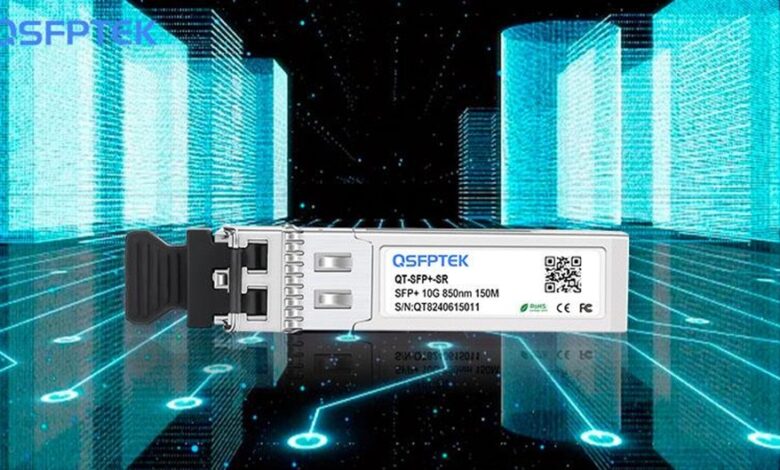
Overview of 10G SR Modules
Introduction
As organizations grow and adapt to the increasing demands of data-intensive applications, network infrastructure needs to keep pace. In this context, 10G optical modules play a key role in ensuring high-speed data transmission within modern data centers and enterprise networks. One of the most widely deployed options is the 10G Short Range (SR) optical module. Designed specifically for short-distance data transmission, 10G SR modules offer fast, reliable connectivity at a relatively low cost, making them a preferred choice in environments where space and bandwidth efficiency are critical.
Definition and Application Scenarios of 10G SR Modules
A 10G SR module is a type of optical transceiver used to send and receive data at speeds of 10 Gbps (gigabits per second) over short distances. It operates over multimode fiber (MMF), which is commonly used in local area networks (LANs) and data centers. The “SR” in the name stands for “Short Range,” indicating that the module is optimized for short transmission distances, typically up to 300-400 meters, depending on the type of multimode fiber in use.
These modules are widely used in data centers for server-to-switch and switch-to-switch connections. They are also found in high-performance computing environments where fast data transfer between computing nodes is essential. For enterprises with large data centers, 10G SR modules provide the bandwidth needed for virtualization, cloud computing, and other advanced IT infrastructures.
Technical Specifications
The 10G SR module adheres to the IEEE 802.3ae 10GBASE-SR standard, ensuring compatibility across a wide range of networking equipment from different manufacturers. The module typically uses an LC duplex connector, which supports both transmission and reception on separate fibers. Operating at a wavelength of 850 nm, the 10G SR module employs VCSEL (Vertical Cavity Surface Emitting Laser) technology, which is highly effective for short-range communication due to its lower cost and high energy efficiency.
These modules are generally hot-swappable, which means they can be replaced or installed without shutting down the entire system, adding flexibility to network maintenance. Additionally, they operate within a temperature range of 0°C to 70°C, making them suitable for the often highly controlled environments of data centers.
Transmission Distance and Bandwidth of SR Modules
The transmission distance of 10G SR modules varies based on the grade of multimode fiber being used. For OM3 fiber, the maximum distance is around 300 meters, while OM4 fiber can extend this to 400 meters. Despite the relatively short range, the bandwidth provided by these modules is substantial, with data rates reaching up to 10 Gbps. This bandwidth is more than sufficient for applications such as high-performance computing, server-to-server communication, and storage area networks (SANs), all of which require fast data transfer and low latency.
Advantages and Limitations of SR Modules
The primary advantage of 10G SR modules is their cost-effectiveness. Multimode fiber is generally less expensive than single-mode fiber, making SR modules an attractive option for organizations looking to upgrade their network without a significant financial outlay. Their low power consumption also contributes to operational cost savings, especially in environments with hundreds or thousands of connections.
However, the limited transmission range of 10G SR modules is a significant drawback for certain applications. While they are ideal for short-distance communication, they are not suitable for long-distance links, such as inter-building or inter-campus connections. In such cases, organizations must invest in long-range alternatives, which typically come at a higher cost.
Environments Suitable for SR Module Use
10G SR modules are best suited for data centers, enterprise networks, and LANs where the need for high-speed data transfer is concentrated within a relatively confined space. Their short-range capabilities make them ideal for inter-rack and intra-rack connections in data centers. These modules are also used in high-performance computing environments, financial institutions, and research facilities where large amounts of data need to be processed quickly and reliably.





